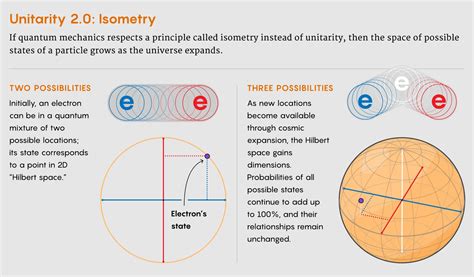
Novel Research Challenges Einstein’s Gravity Theory, Suggesting Need for Revised Cosmological Model
Scientists are grappling with potentially groundbreaking revelations about gravity, prompting a reassessment of established cosmological models and even challenging aspects of Einstein’s theory of General Relativity. A new study indicates that the accepted understanding of gravity’s behavior across vast cosmic distances might be incomplete, necessitating a recalibration of fundamental physics principles.
Published in The Astrophysical Journal Letters, a collaborative research effort led by Professor Indranil Banik from the University of St Andrews, suggests that galaxies experience a stronger gravitational pull than predicted by prevailing theories, implying that standard models may not fully account for gravity’s influence at intergalactic scales. This discrepancy has potentially significant implications for our understanding of dark matter, the accelerating expansion of the universe, and the evolution of cosmic structures.
The prevailing cosmological model, known as Lambda-CDM, hinges on Einstein’s General Relativity and posits that the universe consists primarily of dark energy (Lambda) and cold dark matter (CDM). Dark matter, an invisible and undetectable substance, is believed to exert gravitational force, holding galaxies together and influencing their rotational speeds. However, this new research casts doubt on the adequacy of dark matter as the sole explanation for observed gravitational anomalies.
“Our findings suggest that the standard model, which relies heavily on dark matter and dark energy, might be incomplete,” Professor Banik stated. “There’s a growing body of evidence indicating that gravity behaves differently at large scales than what Einstein’s theory predicts. This compels us to reconsider our fundamental understanding of the cosmos.”
The research team analyzed the orbital speeds of dwarf galaxies around larger host galaxies. They found that these dwarf galaxies are orbiting at speeds higher than predicted by the Lambda-CDM model, even when accounting for the expected contribution of dark matter. This discrepancy indicates that the gravitational force is stronger than expected, suggesting that the conventional understanding of gravity may require revision.
Modified Newtonian Dynamics (MOND) as a Potential Alternative
The research lends support to alternative theories like Modified Newtonian Dynamics (MOND). MOND, first proposed by Mordehai Milgrom in 1983, suggests that gravity’s behavior deviates from Newtonian physics at very low accelerations, such as those experienced in the outer regions of galaxies. This modification can explain the observed flat rotation curves of galaxies without invoking dark matter, and the new study suggests it might offer a more accurate portrayal of intergalactic dynamics.
According to the study, MOND could provide a simpler and more accurate explanation for the observed orbital speeds of dwarf galaxies. Instead of relying on the hypothetical existence of large quantities of dark matter, MOND modifies the laws of gravity to account for the enhanced gravitational effects at low accelerations.
“The MOND theory has been around for decades, but it’s often been dismissed because it appears to contradict Einstein’s General Relativity,” explained Dr. Hongsheng Zhao, a co-author of the study. “However, our findings indicate that MOND might capture some essential physics that General Relativity is missing, particularly at the scale of galaxy groups and clusters.”
The findings are based on a comprehensive analysis of observational data from various sources, including the Gaia satellite and the Sloan Digital Sky Survey. The team meticulously analyzed the positions and velocities of numerous dwarf galaxies, enabling them to construct a detailed map of their orbital motions.
Implications for Dark Matter and Dark Energy
The potential implications of these findings are far-reaching, affecting our understanding of dark matter and dark energy, the dominant components of the universe according to the standard cosmological model. If MOND or a similar modified gravity theory proves to be correct, the need for dark matter and dark energy might be significantly reduced, or even eliminated.
The Lambda-CDM model posits that about 85% of the universe’s matter is dark matter, and about 68% of its total energy is dark energy. Dark energy is believed to be responsible for the accelerating expansion of the universe, a phenomenon discovered in the late 1990s. However, the nature of both dark matter and dark energy remains a profound mystery, and scientists have yet to directly detect dark matter particles.
If modified gravity theories can explain the observed cosmological phenomena without invoking dark matter and dark energy, it would revolutionize our understanding of the universe. It would also eliminate the need to search for elusive dark matter particles, a quest that has occupied physicists for decades.
Challenging Einstein’s General Relativity
The idea that gravity might behave differently at large scales poses a direct challenge to Einstein’s General Relativity, the cornerstone of modern cosmology. General Relativity accurately describes gravity on smaller scales, such as within the solar system, and has been rigorously tested by numerous experiments. However, some scientists have long suspected that General Relativity might break down at the largest scales, where the curvature of spacetime becomes more significant.
General Relativity describes gravity as the curvature of spacetime caused by mass and energy. The theory has been spectacularly successful in explaining a wide range of phenomena, from the bending of light around massive objects to the existence of black holes. However, it has also faced challenges in explaining certain cosmological observations, such as the accelerating expansion of the universe and the flat rotation curves of galaxies.
The new research suggests that modifications to General Relativity might be necessary to fully account for the behavior of gravity at large scales. Several alternative theories of gravity have been proposed, including MOND, Tensor-Vector-Scalar (TeVeS) gravity, and f(R) gravity. These theories attempt to modify or extend General Relativity in order to explain the observed cosmological phenomena without invoking dark matter and dark energy.
The Scientific Community’s Response
The findings have sparked considerable debate within the scientific community, with some researchers welcoming the challenge to the standard cosmological model and others expressing skepticism.
Professor Stacy McGaugh, a leading proponent of MOND at Case Western Reserve University, noted that the new research provides further support for modified gravity theories. “This is another piece of evidence suggesting that we might need to rethink our fundamental understanding of gravity,” he said. “The standard model has faced numerous challenges over the years, and these new findings add to the growing list of anomalies.”
However, other researchers remain unconvinced, arguing that the observed discrepancies could still be explained within the framework of the Lambda-CDM model. They suggest that the distribution of dark matter in galaxies might be more complex than previously assumed, or that other astrophysical processes could be contributing to the observed orbital speeds of dwarf galaxies.
Professor Carlos Frenk, a cosmologist at Durham University, expressed caution about drawing firm conclusions from the new research. “While these findings are interesting, it’s important to remember that the Lambda-CDM model has been remarkably successful in explaining a wide range of cosmological observations,” he said. “We need to carefully consider all the available evidence before we abandon the standard model.”
Future Research Directions
The debate surrounding the nature of gravity and the validity of the Lambda-CDM model is likely to continue for years to come. Future research will focus on gathering more observational data, developing more sophisticated theoretical models, and conducting more rigorous tests of General Relativity and alternative gravity theories.
One promising avenue of research is to study the distribution of dark matter in galaxies using gravitational lensing, a phenomenon where the gravity of a massive object bends the light from more distant objects. By carefully analyzing the distortions in the light, scientists can map the distribution of dark matter and compare it to the predictions of different cosmological models.
Another important area of research is the development of new experiments to directly detect dark matter particles. Numerous experiments are currently underway, searching for various types of dark matter particles using different detection techniques. If dark matter particles are detected, it would provide strong support for the Lambda-CDM model and challenge alternative gravity theories.
Furthermore, researchers are working on developing more sophisticated simulations of the universe, incorporating both General Relativity and modified gravity theories. These simulations can be used to predict the formation of galaxies and other cosmic structures, and the predictions can then be compared to observational data to test the validity of different theories.
A Universe of Unanswered Questions
The new research highlights the fact that our understanding of the universe is still incomplete, and that many fundamental questions remain unanswered. The nature of gravity, the composition of dark matter, and the origin of dark energy are among the most challenging and important questions in modern science.
As scientists continue to explore the cosmos and develop new theoretical models, they are gradually piecing together a more complete picture of the universe. The journey is filled with challenges and uncertainties, but it is also a journey of discovery and wonder. The quest to understand the universe is a testament to the human spirit of curiosity and the unwavering pursuit of knowledge.
The implications of these findings could revolutionize our understanding of the universe’s fundamental forces and its composition. If confirmed by further research, this could mark a significant turning point in cosmology, leading to a new era of exploration and discovery. The scientific community awaits further validation and deeper analysis of these potentially paradigm-shifting results.









